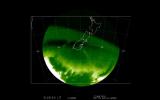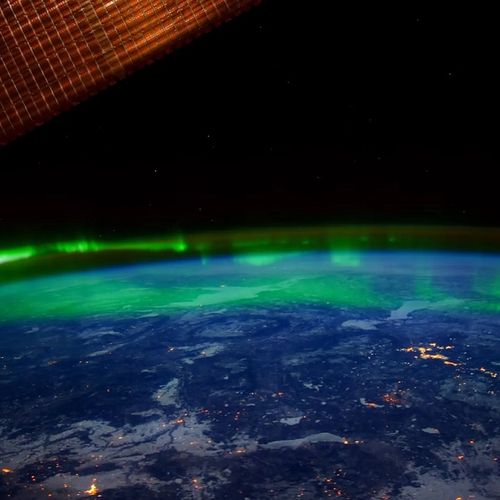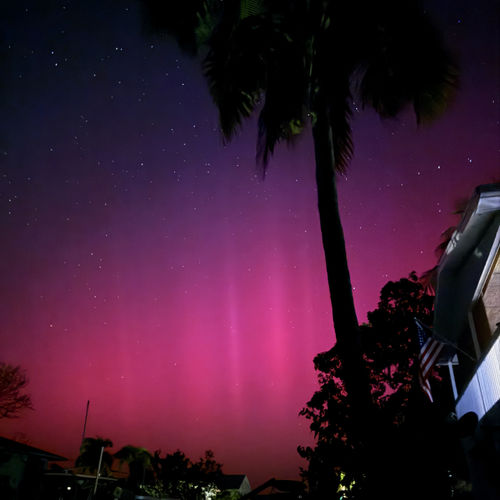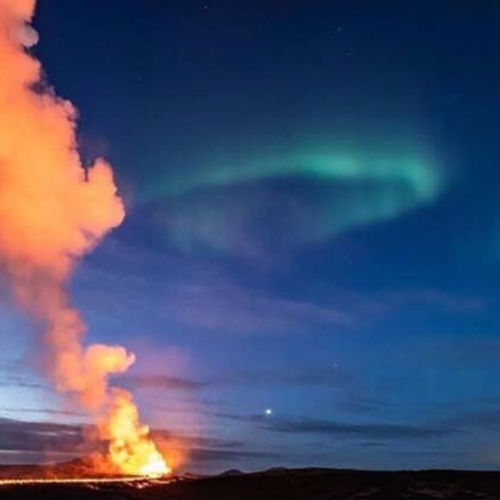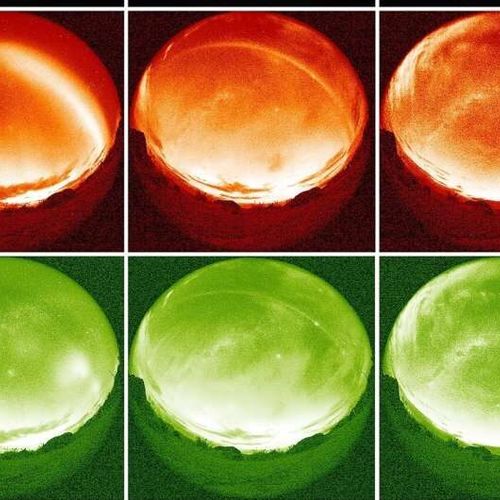
| Added | Tue, 28/06/2022 |
| Источники | |
| Дата публикации | Tue, 28/06/2022
|
| Версии |
(a) A wide stable auroral arc of red color (SAR) is observed at 09:27 UT (left), a strong increase in the rate of thermal radiation (STEVE) at 09:51 UT (center), and a partial arc with green picket fence structures at 10:02 UT (right). Auroral activity is observed in the lower (southern) part of each image. The west is on the right; (b, c and d) show decomposed images in red, green and blue, respectively, at the same time as in panel (a). At 09:27 UT (left), no arc is observed in the green and blue channels. At 09:51 UT (in the center), all three channels detect an arc. At 10:02 UT (right), the main radiation comes from the green channel, where the picket fence structures are observed. A partial arc is also observed in the red channel on the right side of the image.
A group of researchers from New Zealand, the USA and Canada confirmed the first observation of the SAR arc evolving into STEVE. In their paper published in the journal Geophysical Research Letters, the group describes in detail the analysis of numerous data sets used to describe a rare and unique atmospheric phenomenon, and what it showed them about similar phenomena in general.
In 2015, civilian scientist I. Griffith noticed something unusual in the night sky over Dunedin, New Zealand. An arc of light, which he described as blood-red, moved across the dark sky. Intrigued, he took his camera and started filming what was happening. Over the next 30 minutes, the arc slowly transformed into what became known as a strong increase in the rate of thermal radiation (STEVE). Interested in what he saw, he sent the footage to professional stargazers from the University of Otago in Dunedin. The intrigued group also sent pictures to other colleagues. Eventually, a group of researchers was formed to study this event.
The researchers collected data from other sources, including satellites and a sky imager at a local observatory. When studying all the data, it became clear that the first images taken by Griffith showed a stable auroral red arc (SAR), which is a subauroral structure and an event that is not actually an aurora, but occurs in the atmosphere for as yet unknown reasons.
The researchers noted that its appearance coincided with a geomagnetic storm - a disturbance of the Earth's magnetosphere - which suggests that the light was caused by charged particles in the upper atmosphere. Then, when the arc began to subside, the red color turned into lilac - a sign of STEVE, which is also not very well studied. And then, as STEVE began to fade, another light appeared nearby, which was described as a green picket fence, which has already been reported before, but about which even less is known.
The researchers note that all three light events were not aurors, as all three appeared to be the result of locally generated energy rather than particles coming from other locations. They also noted that this event was the first known when all three phenomena were observed together.
The film shows the entire sequence of observations, as well as uncoated films in the red, green and blue channels, respectively. Credit: C. Martinis et al, Rainbow of the Night: The first direct observation of the SAR arc evolving into STEVE,
Additional information: C. Martinis et al, Rainbow of the Night: The first direct observation of the SAR arc evolving in STEVE, Geophysical Research Letters
Новости со схожими версиями
Log in or register to post comments

